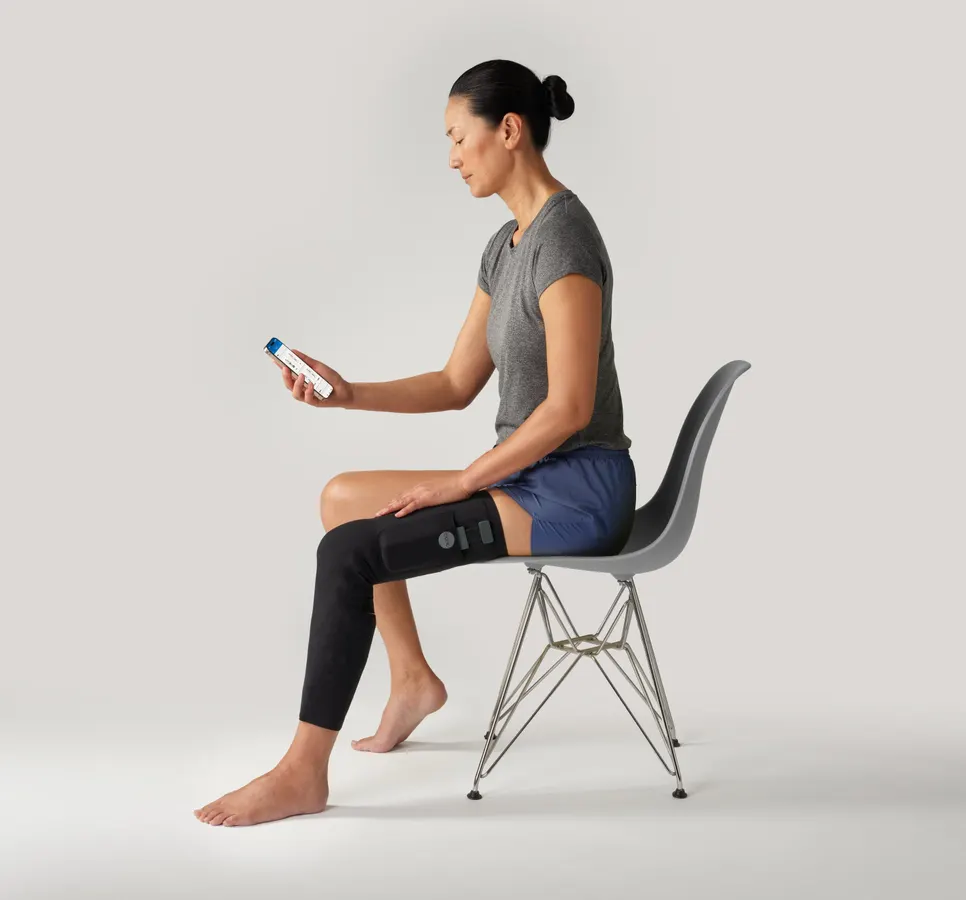By Contributor,Gus Alexiou
Copyright forbes

Cionic’s Neural Sleeve 2 boosts mobility in unique ways.
After receiving U.S. Food and Drug Administration clearance for its second-generation Neural Sleeve 2 last month, Bay Area-based neurotech startup Cionic could be on the brink of something truly remarkable.
The successor to the original Neural Sleeve, launched in 2023, Cionic’s approach to assisting those with conditions such as stroke, spinal cord injury and multiple sclerosis to walk better is based on housing muscle-stimulating electrodes within a lower limb garment resembling a legging. Whilst the core technology known as Functional Electrical Stimulation has been around for decades, Cionic significantly disrupted the market two years ago by increasing the number of electrodes deployed by over tenfold from two to twenty-four. This enhanced electrode array then provided a platform for previously unseen ultra precise, personalized and measurable mobility correction steered through AI and smart technology.
Over the past couple of years, the Neural Sleeve, which is currently only available to patients in the U.S, has helped to propel 500 million electronically stimulated steps for its users.
A further frontier
Now, the company’s second-generation device is taking things to a whole new level with a multi-stim approach that combines this boost to muscles that are not activating correctly due to improper nerve signalling with a secondary simultaneous action to relax muscles that the brain itself is overstimulating. A common neurological symptom known as spasticity can lead to cramping, rigidity, pain and a significantly impaired gait. Spasticity affects approximately 97% of stroke survivors with motor deficits and 84% of people with multiple sclerosis. Pharmacological treatments for spasticity exist but often entail side effects such as muscle weakness and sedation.
Despite launching two highly innovative assistive technology devices in just two years, Cionic, appreciative of the deep neurological interplay and complexities involved, has maintained a cautious, collegiate and codesign-based approach to neurotech throughout. The company’s key partnerships include the Shirley Ryan AbilityLab, Stanford University, the University of Washington, the National Multiple Sclerosis Society and the Multiple Sclerosis Society of America.
MORE FOR YOU
In quotes provided over email, Barry Singer, MD, Director of The MS Center for Innovations in Care at Missouri Baptist Medical Center in St. Louis, said of patients he has overseen using the new Neural Sleeve, “They can do much more activity. They can get out and be active during the day. And I think it kind of builds on itself. Because you’re contracting the muscles, the muscles get stronger. You’re able to walk more, so you’re building up strength. It’s almost like a feedback loop. I just see continued improvement in my patients who use it.”
In a small trial of 45 users of the Neural Sleeve 2, a highly significant 30% reduction in spasticity was observed. Patient testimonials on the company website reveal interesting insights, too. “The Neural Sleeve 2 pretty much eliminates spasticity when I’m wearing it. And with the sleeve on, my gait is so much better. I used to walk and have to take a break, and now I can just walk,” wrote Jason. “Because of the spasticity in my legs, I used to have a lot of trouble at night trying to get some sleep — my leg was always pulsing and jumping. Once I started with the Neural Sleeve 2, it’s almost gone… Being able to sleep through the night is worth it, right there,” Michelle says.
Striding with confidence withthe Cionic Neural Sleeve 2
As for meeting the moment, it is unarguable that the rapid evolution of AI seen across every sector continues to disrupt all before it, and rehabilitation medicine is no exception.
“We’re just in the early days of using electricity and bioelectric medicine, says Cionic’s Founder and CEO Jeremiah Robison, who was inspired to start the company in 2018 after seeing how his daughter Sofia, who has cerebral palsy, was struggling day to day with muscle weakness and spasticity.
“It’s going to take building a lot of awareness for most clinicians who have been practicing for quite some time under the traditional pharma regime. Medical devices as a whole is certainly a tough industry. There’s not that much that has been successful in that world.”
He continues, “Right now, we want to focus on raising awareness amongst clinicians and patients and provide more opportunities for them to see the Neural Sleeve in action.
“Ultimately, everybody’s gait is different and so a device-based approach is really the only way to leverage precision medicine for that. There will never be a single pill that’s going to fix everybody’s gait. You need something adaptive. We’re witnessing the rise of AI; we’ve seen the cost reduction in machines and now we’re seeing the ability of those things meshed together to build devices that really can customize the experience for users.”
In a further flung future, Robison would like to see bionic clothing that can assist those with mobility impairments become a regular item of wardrobe apparel.
“Our North Star is being able to read and write every muscle activation for anybody who has difficulty and challenges, including just old age, which we’re all going to face,” he says.
“We’re not there yet but one day, I’d love it to be that someone just pulls on their pants in the morning, and all of that frictionless technology is just built in, and AI is powering the movements and augmenting a person’s capabilities.”
Right now, such a future may still sound like something out of a quirky science fiction movie, but could not the same be said of Generative AI just 5 short years ago? If striding forwards with purpose is the fastest route to getting us there, then the Cionic Neural Sleeve is certainly a fittingly apt way point on what should be an exciting journey ahead.
Editorial StandardsReprints & Permissions